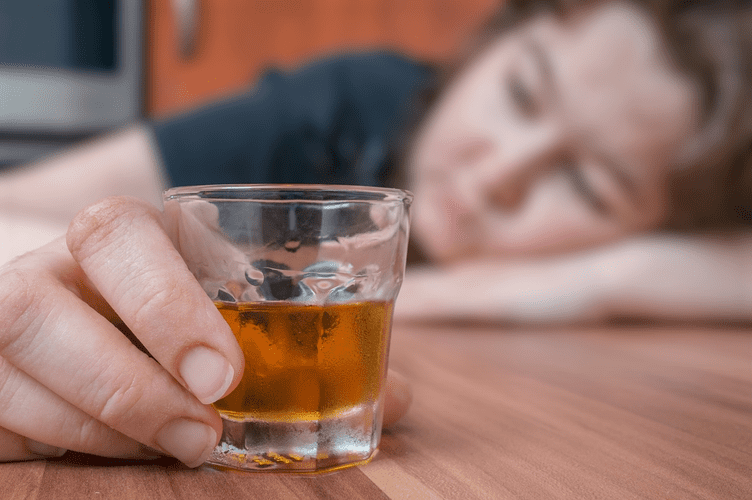Whether you’re seeking help for yourself or a loved one, we’re here to guide https://www.nadinpiter.ru/2024/08/23/27-how-to-stay-sober-at-a-holiday-party-tips-to/ you every step of the way. Different beverages contain varying concentrations of alcohol, making it essential to understand what a “standard drink” represents. This could range from about a full beer bottle to less than two tablespoons of whisky, depending on the strength of the beverage. Tracking your consumption in terms of standard drinks allows you to monitor and compare your progress accurately over time.
Trying Non-Alcoholic Drinks
You may not need to completely reinvent your life to quit drinking, but making a few changes in your surroundings to help avoid alcohol triggers can make a big difference. Obviously quitting cold turkey from a 12-beer-a-day habit is going to be more stressful than tapering off slowly. It teaches you healthy ways to cope with stress and techniques for overcoming the underlying causes of alcohol addiction. If you’ve become dependent on alcohol, cutting it out of your life may produce withdrawal symptoms, such as a rapid heartbeat, high blood pressure, sweating and shaking.
Learn to live a Sober, Vibrant & Substance-Free Life
- We do not and have never accepted fees for referring someone to a particular center.
- Understanding the impact of alcohol on nutrient levels and the potential risks of alcohol withdrawal is essential for individuals seeking to wean themselves off alcohol safely.
- Knowing how to taper off alcohol correctly can reduce risks and help individuals achieve sobriety more comfortably.
This method is more effective when combined with gradual reduction and is typically introduced later in the tapering process rather than at the beginning. Tapering off alcohol allows you to minimize withdrawal symptoms, manage cravings for more alcohol, and focus on improving your mental health. You cut out one drink at a time on each subsequent day using a direct taper.
How to Wean Off Alcohol & Safely Taper Drinking
Fill out a quick form to connect with specialists and explore personalized how to wean off alcohol paths to lasting recovery. Going from 750ml liquor per day to lite beer is a big cut down and not a taper. You can become conditioned to reach for a drink when your environment offers up certain cues. We all become conditioned to have certain responses to triggers throughout our lives. It’s normal for certain stimuli to cause a reaction in your mind and body without even being aware of it.

Drug rehab programs vary in length, from short-term options of a few weeks to long-term residential programs lasting up to a year, offering tailored care to address individual needs. Each program provides different levels of support, incorporating detox, therapy, and aftercare to promote sustained recovery. Inpatient rehab offers 24/7 care, structured therapy, and a supportive environment, helping individuals build resilience and strategies for lasting recovery and wellness. Redefining your daily routine to promote long-term healing is more important for successful alcohol tapering off than simply cutting back on alcohol consumption. Even if the doctor or medical staff let you taper off at home, you should also consider taking proper guidance from them to achieve the best and safest results. The doctor would also prescribe supplements and provide counseling for effective alcohol tapering.
This involves keeping track of your alcohol intake and noting any withdrawal symptoms that may occur. If withdrawal symptoms become severe, it may be necessary to adjust your tapering plan or seek immediate medical attention 2. An alcohol taper is a way to wean yourself off alcohol and avoid withdrawal symptoms. Although all forms of alcohol cessation should be done with medical guidance, tapering your alcohol intake may allow you to self-wean from drinking at home. Long-term alcohol use can lead to alcohol use disorder (AUD) and physical dependence.
Make a Tapering Log
Gradually decreasing intake, replacing alcohol with healthier alternatives, and seeking professional guidance or support groups can significantly ease the transition. Additionally, adopting stress-management techniques, such as mindfulness or exercise, and building a strong support network are essential for long-term success. While the path may be difficult, it is a vital step toward reclaiming health, relationships, and overall well-being. Gradual reduction of alcohol intake or tapering helps avoid severe Sober living home withdrawal symptoms that can occur when one stops drinking abruptly. It's important to recognize that quitting alcohol "cold turkey" can lead to dangerous, even fatal withdrawal symptoms. Tapering off alcohol gradually lowers the amount of alcohol used over time, resulting in less severe withdrawal symptoms.
- Alcohol’s effects vary based on factors like weight, gender, age, and individual metabolism.
- Implementing healthy coping mechanisms is essential to replace the role alcohol plays in an individual’s life.
- Guidance for tapering off alcohol can vary, and there's limited specific advice available.
- Some individuals may benefit from setting rewards for reaching these goals to maintain motivation.
Understanding the Dopamine Detox Timeline: A Step-by-Step Guide

Since alcohol depresses central nervous system activity, quitting drinking can cause an imbalance of an excitatory neurotransmitter called glutamate. This excess glutamate triggers alcohol withdrawal symptoms, which can sometimes be dangerous. It's important to note that tapering off alcohol should be done under the guidance of a healthcare professional or addiction specialist.
